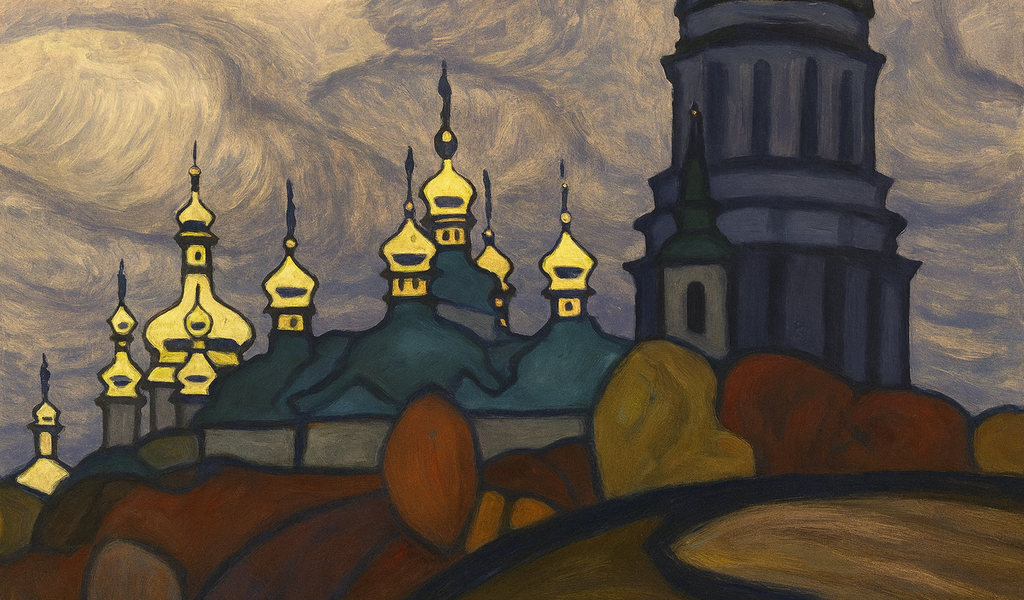One of the leading concepts of Russian history has been, and still remains, the belief in the unity of the Ukrainian and Russian peoples. This idea was mandatory in the Russian Empire at the beginning of the 19th century, later it migrated into Soviet historiography, and from there into modern Russian history textbooks. Yet our chronicles have preserved many interesting details that convincingly refute this concept. A careful reading of them shows that, from ancient times, there were clear differences between the population of what is now Ukraine and Russia.
The Slavic tribes—the Severians, Drevlians, Polians, Dulebes, White Croats, Tivertsi, and Ulichs—formed the basis of the population of Kyivan Rus. The Finnic tribes—the Merya, Meshchera, and Muroma — inhabited the northern lands of the state. Between them gradually settled the Vyatichi (in the interfluve of the Desna and Oka rivers) and the Krivichi (between the upper Dnipro and the Volga). This indicates that the beginnings of history unfolding in the south—in the basins of the Dnipro and Bug—and that arising in the interfluve of the Oka and Volga could not have been identical. Each country lived its own separate life until the mid-10th century (964–966), when Prince Sviatoslav Ihorevych subdued the Vyatichi and the Finnic tribes. By that time, however, when the lands between the Oka and Volga were annexed to Kyivan Rus, Rus itself already had more than a century of history. Let us recall at least the campaign of Askold against Constantinople (860–867). The Rus had a fleet that reached the Second Rome, and only a miracle saved Constantinople. The result of this campaign was the first baptism of Rus, as recorded by a number of Byzantine historians. The eminent historian V. Kliuchevsky noted: “The Rus state was founded by Askold… it was from Kyiv, not from Novgorod, that the unification of the Slavs began.”
Already at the beginning of the 10th century, Kyivan Rus again became a threat to Constantinople. But it all ended with the signing of a peace treaty by Prince Oleg with Byzantium. It is known that by 945, the treaty was concluded not only by pagans but also by Christians as full-fledged citizens of Rus. This document is the oldest monument of international law in Eastern Europe. After the death of Prince Ihor, his widow Olha assumed the grand princely throne, which testifies to the high level of political culture and tolerance in Kyivan Rus.
In 966, the lands of the northern Volga region became part of Rus. At the beginning of the 11th century, the cities of the Merya tribes — Rostov on the Volga and Murom on the Oka—were given by Prince Volodymyr to his sons: Rostov to Borys, Murom to Hlib. In the testament of Yaroslav the Wise, Rostov went to Vsevolod as an addition to Pereiaslav, while Murom was given to Sviatoslav together with Chernihiv. Later, when Vsevolod, after the death of Iziaslav, assumed the grand princely throne, he joined Kyiv, Chernihiv, Pereiaslav, and Smolensk, adding to them the Volga region, while leaving Murom to Sviatoslav’s sons.
Only in the early 12th century did the Volga region begin to acquire significance as separate lands. Volodymyr Monomakh gave it to his son Yurii Dolgorukii—the first prince of the Rostov-Suzdal land. Even in his struggle for Kyiv with Iziaslav II, Yurii did not abandon his domains. But the Kyivans did not like him: after the prince’s death, they looted his palaces and expelled the Suzdalites. Yurii’s son Andrei, having plundered Vyshhorod and taken with him the miraculous Vyshhorod icon of the Mother of God, fled. He clearly understood the difference between the Kyivan state and Suzdal and sought to distance himself from Kyivan Rus. Having plundered Kyiv, he did not occupy it, as his father once did, but only sought to place his own protégés there. And not only politically did Andrei attempt to separate Suzdal from Kyiv—he also strove for ecclesiastical independence, asking the Patriarch of Constantinople to ordain a separate metropolitan for Suzdal. In 1160, the Greeks rejected this request. Perhaps if they had agreed to it then, this would have definitively divided Kyivan Rus and Suzdal.
From the mid-12th century, the Vladimir-Suzdal principality gradually separated itself from the southern lands, which retained the self-designation “Rus’.” In the 11th–12th centuries, Kyivan Rus was a powerful state: its gold and silver, natural wealth, and high-quality production of enamel and finift were highly valued in the West. With the adoption of Christianity, Rus entered the first ranks of leading European states. Dozens of dynastic marriages united the Kyivan princes with the houses of European monarchs. The situation in Suzdal was entirely different. Kliuchevsky characterized this land as follows: “This was a land that lay outside the old core Rus and in the 12th century was more foreign than Rus itself: here lived… the Muroma, the Merya, and the Ves.”
It is telling that the population of Suzdal did not call itself Rus. In 1155, a chronicler wrote: “Yurii… went from Suzdal to Rus and came to Kyiv.” In 1152, the Laurentian Chronicle records: “Gyurgi came with his sons and with Rostovites and with Suzdalites and with Ryazanites… into Rus.” In 1154, the Hypatian Chronicle states: “Gyurgi came with Rostovites and with Surazhites… into Rus.” The Suzdal Chronicle reports that in 1175, after the murder of Andrei, the Suzdalites, Rostovites, and Pereiaslavites deliberated: “Our prince has been killed… but his brothers are in Rus,” and they sent envoys “to go for our princes in Rus.” In the Fourth Novgorod Chronicle it is noted: “Prince Sviatoslav Vsevolodovych went… with Chernihivites from Rus to Suzdal.”
There are many such examples in the chronicles. And they are sufficient to understand: by the mid-13th century, Suzdal—politically, economically, ethnically, and geographically—was entirely distinct from Rus.

 DE
DE  RU
RU  UK
UK 